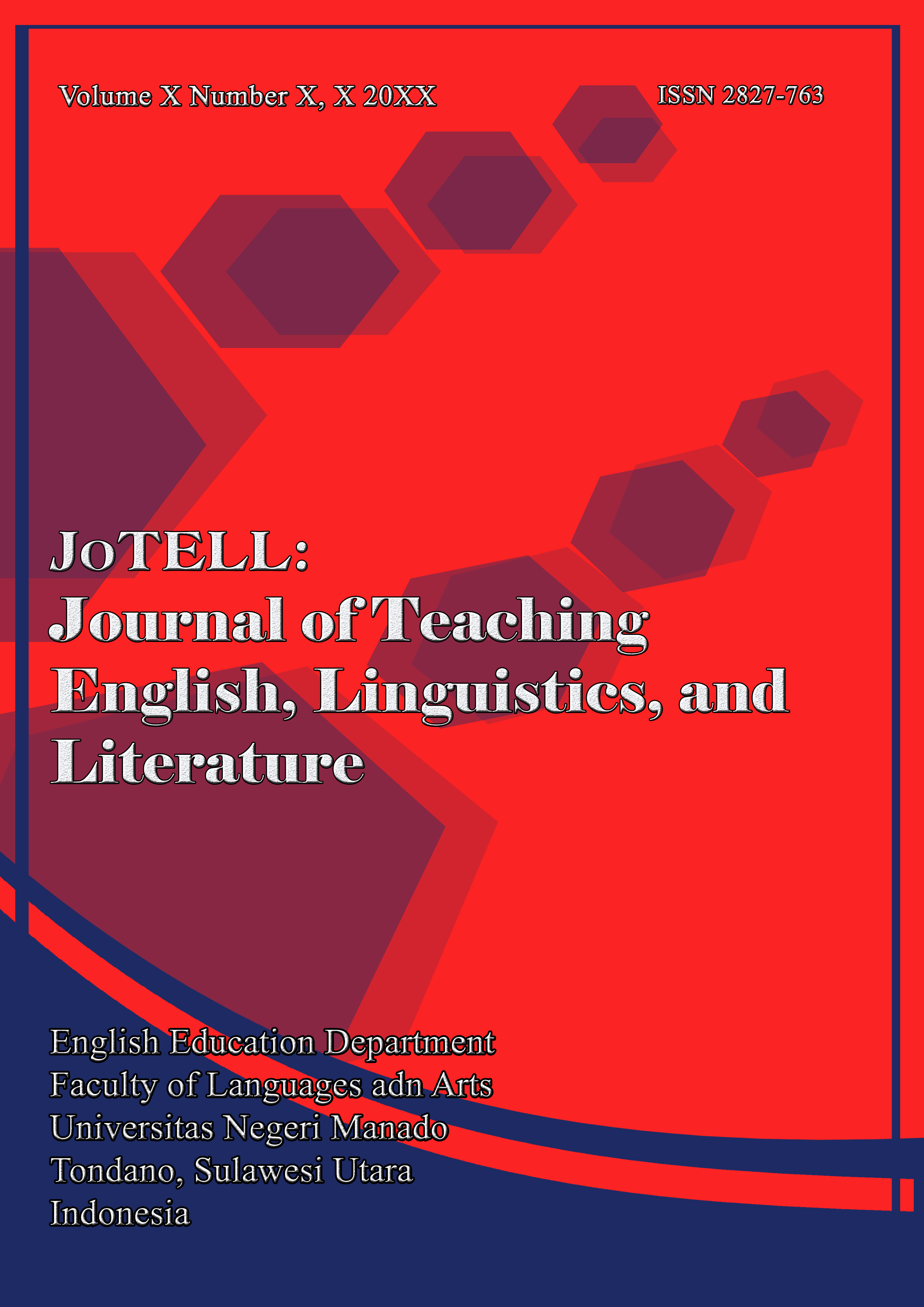IMPROVING STUDENTS’ READING COMPREHENSION THROUGH THE USE OF POWER POINT IN READING SHORT STORIES
DOI:
https://doi.org/10.36582/jotell.v3i4.8906Keywords:
Power Point, Reading, Short StoryAbstract
The purpose of this research was to determine whether power point as a learning media used for reading short stories can improve students' reading skills. This research was conducted at SMK Likupang. The sample used in this study was class X students of SMK Likupang consisting of 23 students. The research design used was an experimental design with a quantitative approach, this pre-experimental research was conducted using pre-test, and post-test treatments. The instrument in this study was a test in the form of a questions. 10 questions are multiple choice and 10 another are completion questions. After analyzing the data, it was found that the average value of the post-test of 85.22 with a standard deviation of 6,30 was higher than the average value of the pre-test which was only 57.82 with a standard deviation of 7,54. This means that the post-test results are superior to the pre-test results. So it can be concluded that power point can improve the reading skills of class X students at SMK Likupang
References
Anne, L. P. (2018). The Gold Can Stay: The Meaning Transformation Of The Word ‘Gold’in Robert Frost’s Nothing Gold Can Stay And Se Hinton’s The Outsiders (Doctoral dissertation, Universitas Andalas).
Hatch & Farhady. (1982). Research Design and Statistics for Applied Linguistics. Los Angels: University of California.
Kemendikbud. 2013. Pedoman Pelatihan Implementasi Kurikulum 2013. Jakarta:Kemendikbud.
Liando, N. V., Tatipang, D. P., & Lengkoan, F. (2022). A Study of Translanguaging Practices in an EFL Classroom in Indonesian Context: A Multilingual Concept. Research and Innovation in Language Learning, 5(2), 167-185.
Maru, M. G. (2014). Suggesting Jeremiadic Approach As An Alternative for Language Teaching in the Light Curriculum 2013. English in the Professional World: Issues of the teaching of English language and culture in the professional world, 116.
Maru, Mister Gidion. (2009). Engaging Literary Text to Language Exposure for Foreign English Learner. International Conference on TELF/ICOTEFL. Muhamadiyah University Purwokerto, Indonesia.
Moore, Gray W. (1983). Developing and Evaluating Educational Research.Boston: Macmilan Heineman.
Smith, F. (1995). Understanding Reading: A Linguistic, Analysis of Reading and Learning to Read. New York: Holt, Reinhart and Winston.
Smith, N. B. & Robinson, H. A. (1980). Reading instructions for today’s hildren. Prentice–Hall, Inc.
Strevans, P. (1977). New Orientation in Teaching of English. Oxford University Press
Downloads
Published
How to Cite
Issue
Section
License
Copyright (c) 2024 JoTELL : Journal of Teaching English, Linguistics, and Literature

This work is licensed under a Creative Commons Attribution-ShareAlike 4.0 International License.












